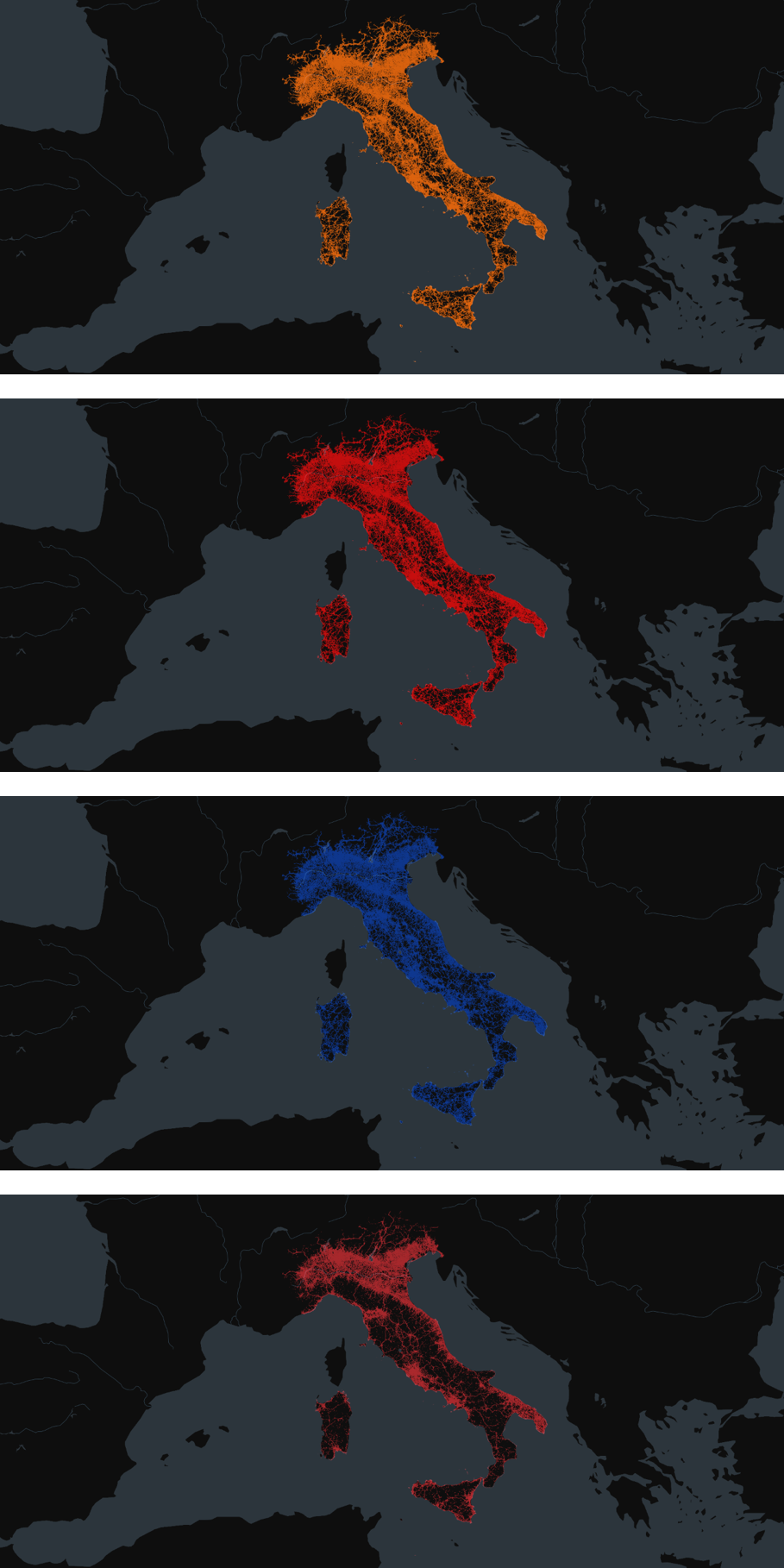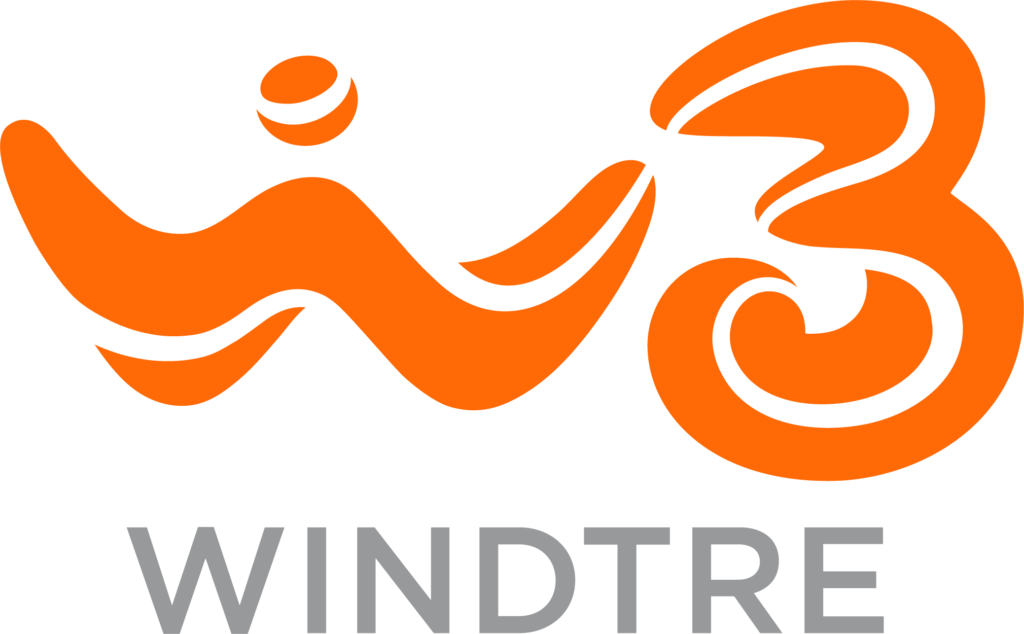Introduction
The Italian mobile market comprises several carriers, of which four have their own networks (MNOs): Iliad, TIM, Vodafone and Windtre. Regarding mobile telecommunications, MNOs are the main player of interest for TowerCos. The objective of this report is to provide a summary of the current opportunities for TowerCos in the country as a preliminary estimate.
This report provides this summary based on the following KPIs:
- Differences in coverage by MNO: not all MNOs may have the same coverage 4G and 5G along the country. Global and regional differences may help TowerCos to properly approach MNOs.
- Degraded coverage areas: areas of the country where the network (in 4G and possibly 5G) shows degradation.
- Potential co-location opportunities: co-location agreements (site sharing agreements) reduce the building, installation and maintenance costs for MNOs, while improving profitability for TowerCos and optimizing space usage and resources for everyone.
- Potential BTS opportunities in urban areas: urban areas are some of the most interesting zones for performing BTS (new deployments) for MNOs.
This report is divided in two great blocks:
- Block 1, with an analysis at a global level.
- Block 2, focused on BTS opportunities in urban areas, where deployments are more adjusted and optimized.
Summary
Italy, the 4th largest economy in Europe and the 9th largest economy in the world, home to around 59 million people, is a world-class economy with a consolidated competitive telecommunications market ripe with opportunities.
Four major players dominate the mobile market with their own networks: Iliad, TIM, Vodafone and Windtre.
In the landscape of MNOs in Italy, TIM (Telecom Italia Mobile) emerges as the predominant carrier, leading a market share of 27.9%. Closely following is Vodafone, a subsidiary of the Vodafone Group, a global telecommunications conglomerate based in the United Kingdom, which secures a 27.2% market share. In the subsequent position, Windtre, a product of the merger between Wind Telecomunicazioni and 3 Italia, holds a 23.7% market share. Concluding the list, Iliad, a member of the Iliad Group, a French telecommunications firm, constitutes 9.7% of the market.
All these figures include MVNOs subscribers. This scenario makes the italian market a very dynamic and attractive one.
Co-location opportunities in the whole territory
- TIM and Vodafone sites have similarly interesting co-location opportunities for both Iliad and Windtre. However, they provide a smaller interest to each other due to their similar deployments strategy.
- Iliad and Windtre sites provide co-location opportunities to all their competitors at similar rates.
Potential BTS opportunities in urban areas
- Iliad has the highest number of BTS opportunities, whereas Vodafone and TIM (the second and first MNO in the country) have the least number of BTS opportunities.
- All MNOs, however, exhibit great number of BTS opportunities in a similar range.
- Due to the consolidated nature of the italian market, it is expected that many of these BTS opportunities could be shared by different MNOs.
Methodology
Under this section an in-depth description of each analyzed KPI can be found, including the methodology and rationale behind them. At a more general level, the following paragraph describes the data collection methodology.
At a more general level, Weplan Analytics collects crowdsourced data from more than 200 million devices in 31 countries. For this analysis, 3 billion measurements collected between March and May 2024 were used.
The following map shows the density of measurements taken throughout Italy by Weplan Analytics.
The most relevant insights can be found in the Summary section above. A detailed account of each one comprises the rest of the report below.
In this report, we have analyzed the network of each carrier, regardless of the SIM that has connected. This means our focus is on the network itself, rather than the identity of the SIM card provider.
More details about the methodology can be found here.

Block 1A: Differences in coverage by MNO in the whole territory
Windtre has a more extense coverage area than its competitors. In contrast, Iliad demonstrates the most limited coverage area. It could be due to an insufficent market penetration. This difference in coverage means that Iliad has the most potential for BTS opportunities.
The images show the coverage area for each MNO.
Percentage of covered area compared to Windtre (Windtre is the reference at 100%)
Block 1B: Degraded coverage areas in the whole territory
An estimate of the percentage of the coverage area that shows signs of degradation can be calculated. Some global highlights are the following:
- Globally, TIM is the carrier with less percentage of its coverage area showing signs of degradation (around 22%).
- Iliad and Vodafone are nearly tied with 23% and 24% of their area, respectively, showing signs of degradation.
- Approximately a 30% of the coverage area of Windtre shows signs of degradation.
Percentage of degraded and not degraded coverage area in all Italy by MNO
Block 1C: Potential co-location opportunities in the whole territory
An estimate of the percentage of the current coverage area where there could be co-location agreements can be estimated. Some global highlights are the following:
- TIM and Vodafone sites have similarly interesting co-location opportunities for both Iliad and Windtre. However, they provide a smaller interest to each other due to their similar deployments strategy.
- Iliad and Windtre sites provide co-location opportunities to all their competitors at similar rates.
The following chart shows in the horizontal axis the carrier providing a co-location opportunity, and in the vertical axis the MNO that would benefit from it. The color indicates the offering MNO, that is, the representative color throught the report for the MNO in the horizontal axis:
Block 2: Potential BTS opportunities in urban areas
A downward estimate of the number of sites needed to support the already existing deployment can be calculated.
This takes into account both areas with degradation and areas where a MNO has no coverage. For this calculation, densification needs have not been taken into account.
Only urban areas have been considered, to ensure that all MNOs are compared under similar situations.
Some global highlights are the following:
- Iliad has the highest number of BTS opportunities, whereas Vodafone and TIM (the second and first MNO in the country) have the least number of BTS opportunities.
- All MNOs, however, exhibit great number of BTS opportunities in a similar range.
- Due to the consolidated nature of the italian market, it is expected that many of these BTS opportunities could be shared by different MNOs.








